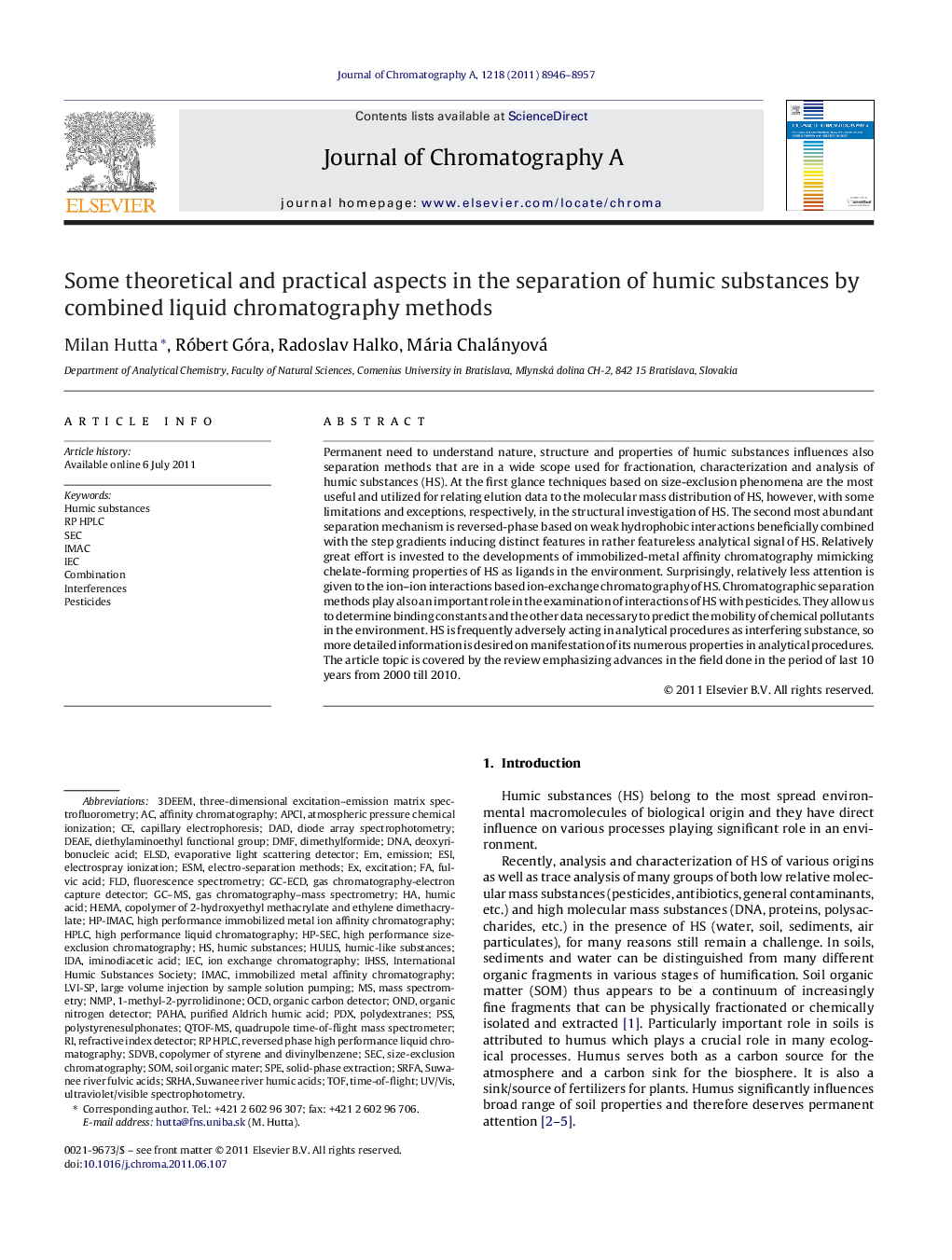| Article ID | Journal | Published Year | Pages | File Type |
|---|---|---|---|---|
| 1203303 | Journal of Chromatography A | 2011 | 12 Pages |
Permanent need to understand nature, structure and properties of humic substances influences also separation methods that are in a wide scope used for fractionation, characterization and analysis of humic substances (HS). At the first glance techniques based on size-exclusion phenomena are the most useful and utilized for relating elution data to the molecular mass distribution of HS, however, with some limitations and exceptions, respectively, in the structural investigation of HS. The second most abundant separation mechanism is reversed-phase based on weak hydrophobic interactions beneficially combined with the step gradients inducing distinct features in rather featureless analytical signal of HS. Relatively great effort is invested to the developments of immobilized-metal affinity chromatography mimicking chelate-forming properties of HS as ligands in the environment. Surprisingly, relatively less attention is given to the ion–ion interactions based ion-exchange chromatography of HS. Chromatographic separation methods play also an important role in the examination of interactions of HS with pesticides. They allow us to determine binding constants and the other data necessary to predict the mobility of chemical pollutants in the environment. HS is frequently adversely acting in analytical procedures as interfering substance, so more detailed information is desired on manifestation of its numerous properties in analytical procedures. The article topic is covered by the review emphasizing advances in the field done in the period of last 10 years from 2000 till 2010.
